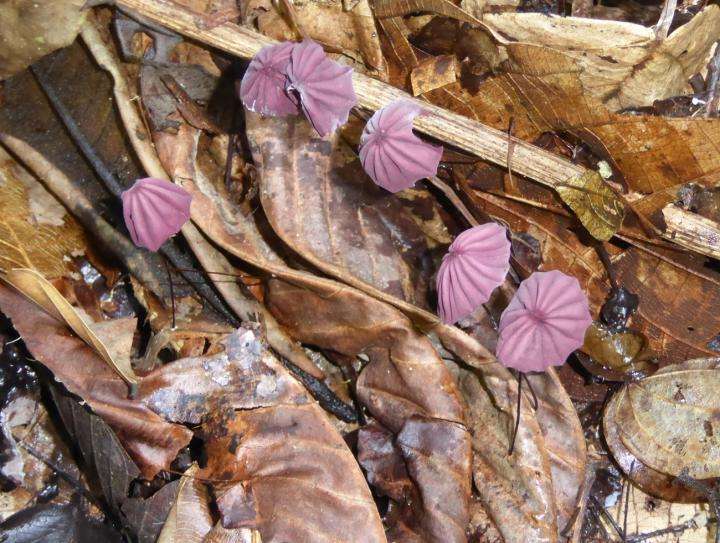Top 50 most wanted fungi: New search function zooms in on the dark fungal diversity

There are many millions of undescribed fungi, and public DNA sequence databases contain thousands of fungal sequences that cannot be assigned to any known fungal group with confidence. Many of these sequences have defied robust taxonomic assignment for more than 10 years.
Frustrated at this situation, an international group of researchers presents a search function in the UNITE database for molecular identification of fungi. Its aim is to highlight the fungi we know the least about, and invite the scientific community to resolve their taxonomic affiliation. The effort seeks to bridge the substantial knowledge gap between fungal taxonomy and molecular ecology through a list, the authors refer to as the "50 Most Wanted Fungi". Their work is presented in a new research paper published in the open-access journal MycoKeys.
Some 100,000 species of fungi have been described formally, although current estimates put the number of extant fungal species to at least 6 million. There is clearly no shortage of research venues in the study of fungi - but are there other shortages? The vast dark fungal diversity unravelled with molecular techniques hints that the interaction between fungal taxonomy and DNA sequencing of environmental substrates such as soil and water is not necessarily optimal.

"There is no taxonomic feedback loop in place to highlight the presence of these enigmatic lineages to the mycological community, and they often end up in sequence databases for years without attracting significant research interest," explain the authors. "More than 10 years in some cases, as a matter of fact."
Therefore, the researchers, led by Dr Henrik Nilsson, University of Gothenburg, now present a search function that produces lists of approximately genus-level clusters of fungal DNA sequences whose taxonomic affiliation we know next to nothing about. These lists are recomputed on a monthly basis, accounting for any updates and additions contributed by the scientific community in between each iteration. Community participation is encouraged, and the UNITE database has extensive support for third-party annotation.
By putting the spotlight on these fungal lineages, Dr Nilsson and colleagues hope to speed up the study and formal description of the underlying species. To support researchers focusing on select groups of fungi or environments, a set of keyword-filtered lists is provided. This allows researchers to zoom in on unknown fungi recovered, for example, from the built environment or aquatic habitats.
Commenting on their choice of a name for the list, the researchers clarify that the underlying fungi are not guilty of any crime. "Indeed, nothing can be said of the way they make a living. It is simply not known. We make no claim as to the importance of these fungi from whatever point of view - ecological, economic, or otherwise," they stress. "We do make claim to their uniqueness, though, because it is frustrating, in the year 2016, not to be able to assign a name to a fungal sequence even at the phylum level."
"We hope that the present publication will serve to put the spotlight on these uncharted parts of the fungal tree of life, and we invite the reader to examine them through our online tools or otherwise," they conclude.
More information: R. Henrik Nilsson et al. Top 50 most wanted fungi, MycoKeys (2016). DOI: 10.3897/mycokeys.12.7553
Provided by Pensoft Publishers


















